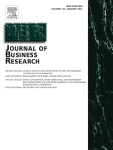Working Papers
Hausmann, R., Espinoza, L. & Santos, M.A., 2015
Chiapas is not only the lowest per capita entity in Mexico, but also the one that has grown the least during the last decade. As a result, the gap that […]
Chiapas is not only the lowest per capita entity in Mexico, but also the one that has grown the least during the last decade. As a result, the gap that separates it from the rest of the country has been widening significantly. This performance contrasts with the environment of relative macroeconomic and institutional stability that has prevailed during this period.
The low level of income in Chiapas is consistent with the inability of the state to produce things that it can sell beyond its limits. Its per capita exports are among the lowest in Mexico and are concentrated in a series of agricultural primary products, which are traded in highly competitive markets with very low margins.
What are the reasons behind Chiapas’ poor economic performance? This document follows the growth diagnosis methodology developed by Hausmann, Rodrik and Velasco (2005), adapting it to a sub-national context. Our objective remains the same: to identify the main constraints to economic growth in Chiapas.
According to the results of our analysis, the main restrictions on the growth of the state are not found in any of the usual suspects. Low levels of education to some extent are associated with the backwardness of Chiapas, but barely enough to explain a small part of the gap. The orography and the climate of Chiapas represent a challenge for the lifting and maintenance of its infrastructure, but the latter does not appear as the main restriction to the development of its productive fabric. There is also no evidence of credit market failures. The low levels of private credit in Chiapas are more associated with the low productivity of the economic activities carried out there than with bottlenecks or insufficiencies in the supply of financing.
Our conclusion is that Chiapas is in a (low) productivity trap. Its main problem is that it has an economy of very low complexity or sophistication, which reflects its few productive capacities. Modern production systems require a number of complementary inputs that are absent in Chiapas. In this context, productive diversity and private investment are low because returns to investment are also very low. Since the demand derived from private investment is low, it inhibits the emergence of a supply of complementary inputs, giving rise to a problem of coordination similar to that of the egg and the hen. Solving this coordination problem requires state intervention. Some of the few cases of manufactured exports that exist in Chiapas have resulted from successful state interventions to coordinate the existence of inputs needed for production with the demand for them. This feature provides the supporting argument that justifies the creation of Special Economic Zones.
In Chiapas, this situation is further aggravated by the combination of three factors: (1) high government transfers, (2) lack of public transportation and (3) low educational level.
Government transfers have effects similar to those identified in the economic literature of the Dutch disease: to increase the relative costs of tradable goods by tilting economic activity to the non-tradable sectors. The absence of a public transport system directly reduces the net benefit of working in the city if you live in the countryside. Thus, a dual equilibrium has been established with significant differences between wages across the entire range of professions and occupations between cities and their nearest rural communities. Finally, although Chiapas has gradually closed the educational gap that separates it from the rest of the country, there are still significant differences. In our opinion, This gap is due to the fact that the decision to accumulate years of schooling is partly endogenous to the returns obtained from education. Seen this way, education gaps would be a mirror of the differences in terms of production methods that predominate in Chiapas, in contrast to the rest of the country. For this reason, we observe that while returns to education are higher in Chiapas, it is more profitable for each educational level to emigrate (to a place where there are other complementary inputs that make higher productivity and a higher salary possible) than to stay in work the entity. Chiapas emigrants, although few, receive similar incomes to workers with the same level of education at the destination. Education gaps would be a mirror of the differences in terms of production methods that predominate in Chiapas, in contrast to the rest of the country. For this reason, we observe that while returns to education are higher in Chiapas, it is more profitable for each educational level to emigrate (to a place where there are other complementary inputs that make higher productivity and a higher salary possible) than to stay in work the entity. Chiapas emigrants, although few, receive similar incomes to workers with the same level of education at the destination. Education gaps would be a mirror of the differences in terms of production methods that predominate in Chiapas, in contrast to the rest of the country. For this reason, we observe that while returns to education are higher in Chiapas, it is more profitable for each educational level to emigrate (to a place where there are other complementary inputs that make higher productivity and a higher salary possible) than to stay in work the entity. Chiapas emigrants, although few, receive similar incomes to workers with the same level of education at the destination. For each educational level it is more profitable to emigrate (to a place where other complementary inputs exist that make possible a greater productivity and a higher salary) than to stay to work in the entity. Chiapas emigrants, although few, receive similar incomes to workers with the same level of education at the destination. For each educational level it is more profitable to emigrate (to a place where other complementary inputs exist that make possible a greater productivity and a higher salary) than to stay to work in the entity. Chiapas emigrants, although few, receive similar incomes to workers with the same level of education at the destination.
The policy implications of this diagnosis point to the need to take advantage of the knowledge that already exists in the greater populated centers of Chiapas and in the rest of Mexico to promote diversification towards other more complex activities that can build upon the capacities already Existing in the area. The creation of a public transport system linking the rural communities surrounding the city could solve the constraint of labor shortages, while opening up greater urban employment opportunities for the inhabitants of neighboring rural communities. This is a typical example of the egg and chicken dynamics that prevails in Chiapas, since a minimum scale of operation is required for the creation of an efficient public transport system,
Our prescription suggests that we take the mountain to Muhammad, since Muhammad has not gone to the mountain. That is to say, to try to solve the problems of coordination through an intervention that approaches the work opportunities to where the workers are, given that under the current conditions the latter do not find it profitable to get closer to where the job opportunities are. There are rural areas with low participation rates and high poverty rates in the neighborhood of San Cristóbal de las Casas. This is also a region where there is a lot of uncertainty for private economic activity, since the existence of ejido territories of community ownership predominates there. One implication of our analysis could be to create an Industrial Park around San Cristóbal, That solves the lack of public goods that has kept away the private economic activity (legal insecurity, difficulty to get land, social unrest), and at the same time bring the companies where the available labor is. The experience within Chiapas of companies like Arnecom-Yazaki indicates that with short training periods, workers could be integrated into relatively modern systems and deal productively.
This solution is a step on which we can enter a sustained development dynamic, through successive improvements in productivity derived from the transformation of production and the progressive adoption of more modern production systems. To grow, Chiapas must start by learning to do things that are already produced in the rest of Mexico and can sell out of the state. From there, the economic fabric and knowledge associated with more modern methods of production will be created, and from there gradually the export capacity can be developed and more complex activities can be developed.









